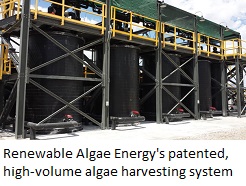Universities in the Washington, D.C. have partnered to bring solar power into the region. The George Washington University, American University (AU) and the George Washington University Hospital (GWUH) created a renewable energy project that will bring the power of the sun from North Carolina.
 Duke Energy Renewables will supply 52 megawatts (MW) of solar photovoltaic (PV) power, which is solar energy that is converted to electricity. This is the equivalent of the amount of electricity used in 8,200 homes every year.
Duke Energy Renewables will supply 52 megawatts (MW) of solar photovoltaic (PV) power, which is solar energy that is converted to electricity. This is the equivalent of the amount of electricity used in 8,200 homes every year.
“Thanks to this innovative partnership, the George Washington University will now derive more than half of all its electricity from solar energy,” said GW President Steven Knapp. “This will greatly accelerate our progress toward the carbon neutrality target we had earlier set for 2025.”
The partnership, dubbed the Capital Partners Solar Project, marks the largest non-utility solar PV power purchase in the U.S. and the largest PV project east of the Mississippi River.
The project, facilitated by CustomerFirst Renewables (CFR), will help GW and AU meet their climate action plan commitments without incurring additional costs. The partners will break ground on the first site this summer.
The project hopes to generate 123 million kilowatt hours (kWh) of emissions-free electricity per year by the end of next year, the equivalent of taking 12,500 cars off the road. Duke Energy officials call the 20-year agreement “a real game changer” as it shows renewables can be used for large customers and shows growth in the clean energy sector.





 things others than humans and nothing was green but all brown? Well this is the world of Jack, growing up in a Southern Appalachian copper mining town. The environment is so bad that the air eats through a pair of pantyhose in a matter of minutes. “
things others than humans and nothing was green but all brown? Well this is the world of Jack, growing up in a Southern Appalachian copper mining town. The environment is so bad that the air eats through a pair of pantyhose in a matter of minutes. “




